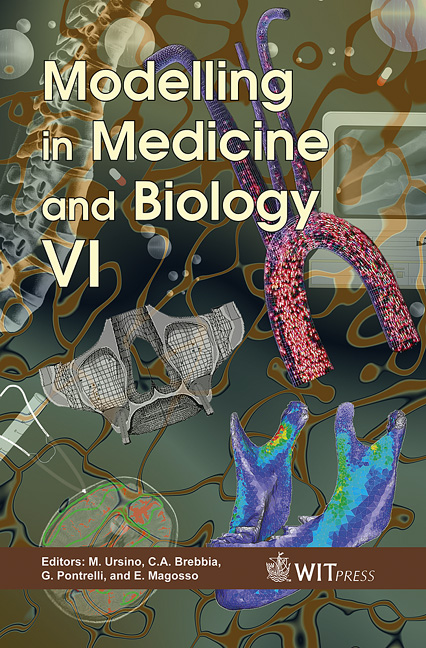A Mathematical Model Of Solute Dynamics In A Curved Artery
Price
Free (open access)
Transaction
Volume
8
Pages
11
Published
2005
Size
343 kb
Paper DOI
10.2495/BIO050311
Copyright
WIT Press
Author(s)
G. Pontrelli & A. Tatone
Abstract
A mathematical model for the mass transport and diffusion process in arteries is presented. Blood flow is described by the unsteady Navier-Stokes equation, and solute dynamics by an advection-diffusion equation. A linearization procedure over the steady state solution is carried out and an asymptotic analysis is used to study the influence of a small curvature with respect to the straight tube. Some numerical experiments in cases of physiological interest are presented: the results show the characteristics of the long wave propagation and the role played by the geometry on the solute distribution. Keywords: solute dynamics, arterial transport, curved tubes, advection-diffusion equation, numerical methods. 1 Introduction Mass transport and diffusion phenomena inside the arterial lumen and through the vascular wall are of great importance for physiological functions, such as oxygenation, nourishment of tissues and metabolic processes. Some mathematical models coupling 3D flow and solute dynamics have been developed in recent years [1–4]. They are defined in a finite arterial segment of arbitrary shape, where an inflow solute distribution is provided [1, 2]. Some of them consider also absorption and exchange through the vascular tissues [3]. All these models provide the local concentration pattern and are useful to understand the relationship between the local flow pattern, the nourishment of arterial tissues and possible pathologies derived when such a process is altered [4]. On the other hand, fluid dynamical factors such as flow separation, recirculation and wall shear stress are correlated to the atherosclerotic lesions. It is known
Keywords
solute dynamics, arterial transport, curved tubes, advection-diffusion equation, numerical methods.





